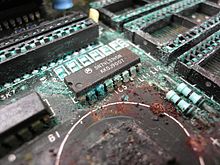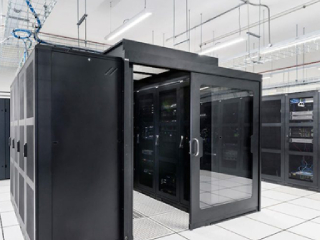As the number of data centers escalates with the surge of IoT services and our connected world, air quality has not always been the top priority. Administrators are more focused on providing efficient cooling systems for their equipment. Hence, overlooking the critical role of air quality. They give attention to issues like overheating but not to air contamination. And this carelessness results in a concentration of pollution in data centers. Neglecting air quality affects not only the human occupants’ health but primarily the machines. Fully understanding and monitoring it can help you reduce all these risks.
Poor Indoor Air Quality Health Risks
Outdoor air pollution has always been one of the major causes of human health problems. Over the past two decades, this area of concern has shifted to indoor air pollution, too. This is due to airborne contaminants from the outside air.
The effect of poor indoor air quality varies from person to person. It depends on biological factors, tolerance to exposure, or existing medical conditions.
Some effects may appear just right after exposure. An affected occupant may complain of irritation of the eyes, allergic reactions, dizziness, and more. Asthma can also be triggered. These effects do not last long and are easier to treat. Getting out of the polluted area and taking pills can eliminate those symptoms. On the contrary, other effects may reflect over the years or after long and multiple exposures. These include chronic diseases and cancers, which can be fatal depending on their severity.
Electronic Equipment Are at Risk Too

Photo credit: upload.wikimedia.org
The adverse effects of poor indoor quality are mostly associated with human health. But not for facilities delivering critical services such as data centers. Monitoring indoor air quality should be more for the benefit of electronic machines than the people. It is recognized that the materials used for electronics are more sensitive to air pollutants than humans. Specifically, equipment that functions based on its surface property is more susceptible.
The most common effect of poor indoor air quality is corrosion. It slowly damages the equipment leading to complete failure. An example is the printed circuit board. The PCB may fail if the variables present in its environment are not monitored. These are temperature and humidity and air contaminants. There are two ways in which PCBs might fail. The first is through corrosion of silver termination in surface mount components resulting in an electrical open circuit. The second is through copper creep corrosion or electrochemical reactions, causing an electrical short circuit.
Dust is also critical to machines. A report in 2019 by Computer Dust Solutions showed that if dust stays on equipment for a long time, it can cause a temperature increase of as much as 30°F, which can result in a shorter lifespan or large-scale computer failure.
The Consequences Free Cooling System
More than 50% of the data centers annual operating budget is allocated to cooling systems. This is because of the increasing energy cost and power consumption of IT devices. To lower this, data center administrators continue to look for strategies for an efficient cooling system. Leveraging free cooling is one of these strategies. A free cooling system called an “economizer” refers to the use of outdoor air to lower the temperature in data centers.
In 2008 and 2011, the temperature and humidity standard for data centers were expanded. This aims to increase the number of areas where free cooling can be operated for a longer period. The energy usage is reduced by filtering outdoor air directly into the data center. However, adopting such an approach is critical. Administrators have to analyze the risks and conditions of every type. The “Direct Fresh Air Cooling” offers the most effective free cooling, yet most critical. This is because of the pollutants that come in with the outdoor air.
Having clean air is important in implementing free cooling. The pollutants mixed with the outdoor air need to be purified before entering the facility. Poor indoor quality can damage your equipment tremendously.
Causes of Poor Indoor Air Quality
The primary causes of poor indoor air quality are the released gases and fine particles in the air.
The main culprit for corrosion is the three types of gaseous contaminants: acidic gasses such as sulfur and nitrogen oxide, caustic gasses like ammonia and amines, and oxidizing gases such as ozone. Out of three, acidic gasses have the most harmful effects on electronic equipment.
Particulate matter also contributes to poor indoor air quality. These include regular industrial gases in the data center, burning fossil fuels, and road dust. Particulate matter is categorized as follows:
- Coarse – if it has a diameter that is less than 10 µm.
- Fine – are those with a diameter smaller than 2.5 µm.
- Primary particles caused by direct emission from the source and,
- Secondary particles result from a chemical reaction in the atmosphere.
- Ultrafine – is the smallest with less than 0.1 µm in diameter.
The smaller particles, the more harmful effects.
Temperature and Humidity are also factors affecting the concentration of pollutants at most sites. A study in China shows that 92% of sites increased ozone concentration because of increased temperature and a decrease in Relative Humidity.
Insufficient ventilation also plays a role in increasing the level of indoor pollutants. If the outdoor air is inadequate, emissions from the indoor sources will not be diluted. The pollutants inside will not also be carried outside the facility. Therefore, ventilation should always be one of the priorities on the air management plan of data centers.

Photo Credit: www.thomasnet.com
Improve Indoor Air Quality
Being proactive helps you save your equipment before a huge loss occurs. Contaminants are threats that the naked eye can’t see. Eliminating them from your data center is impossible. Yet, reducing the number using various strategies will help you improve your indoor air quality.
• Keep it Clean
All dust and debris in the data center should be cleaned every day. Floors are cleaned once a week. Do not use a broom as it stirs up dust and scatters them in the air. A vacuum with a HEPA filter may be the most effective tool to use. You also have to clean the electronic equipment and racks. Wipe the surface using the appropriate disinfectant.
• Use Air Filters
Air filters can be introduced to HVAC systems to eliminate pollutants in the air. Dust, pollen, mold, and other particles occupy the HVAC System. An effective air filter improves the quality of air and lengthens the life span of the HVAC System.
• Air Quality Monitoring
Closely monitoring the temperature, humidity, and air quality allow you to be proactive in taking action against potential problems. Air Quality Monitoring sensors such as those offered by AKCP will give you data about your data center’s air composition and condition. Air quality sensors help you determine the level of potential air contaminants. It can also send an alert if too much level of a harmful contaminant is detected.
Wireless Air Quality sensors can detect 5 different sizes of Particulate Matter. PM0.5, PM1.0, PM2.5, PM4 and PM10. This sensor can also measure the mass concentration of particles in the PM1.0 to PM10 range and particle number concentration in the PM0.5 to PM10 range. The typical particle size is also measured. This measurement is based on the average size of the current sample.
Most of all it can detect various Metal Oxide (NOx) gases, displaying the value as a VOC Index.
Examples of these gases are :
– Acetone (eg. paints and glues)
– Toluene (eg. furniture)
– Ethanol (eg. perfume, cleaning fluids)
– Hydrogen Sulfide (eg. decaying food)
– Benzene (eg. Cigarette smoke)
Conclusion
A quality data center is the key to a business’s success. Having good indoor air quality is not only beneficial for humans but also for electronic equipment.
Free air cooling should be considered in areas where it is feasible, provided that you can comply with the conditions of air quality monitoring. Message AKCP now, the world’s largest Monitoring Solutions provider to know more about Wireless Air Quality Sensor.
Reference Links:
https://www.epa.gov/indoor-air-quality-iaq/introduction-indoor-air-quality#:~:text=Indoor%20Air%20Quality%20(IAQ)%20refers,and%20comfort%20of%20building%20occupants.
https://www.tandfonline.com/doi/pdf/10.1080/00022470.1966.10468451
https://www.baaqmd.gov/~/media/files/planning-and-research/research-and-modeling/macfiles/10-14-2010/ultrafine-particulate-matter-study-plan-draft_2010-09-13.pdf
https://www.dataspan.com/blog/the-importance-of-server-room-cleaning/





